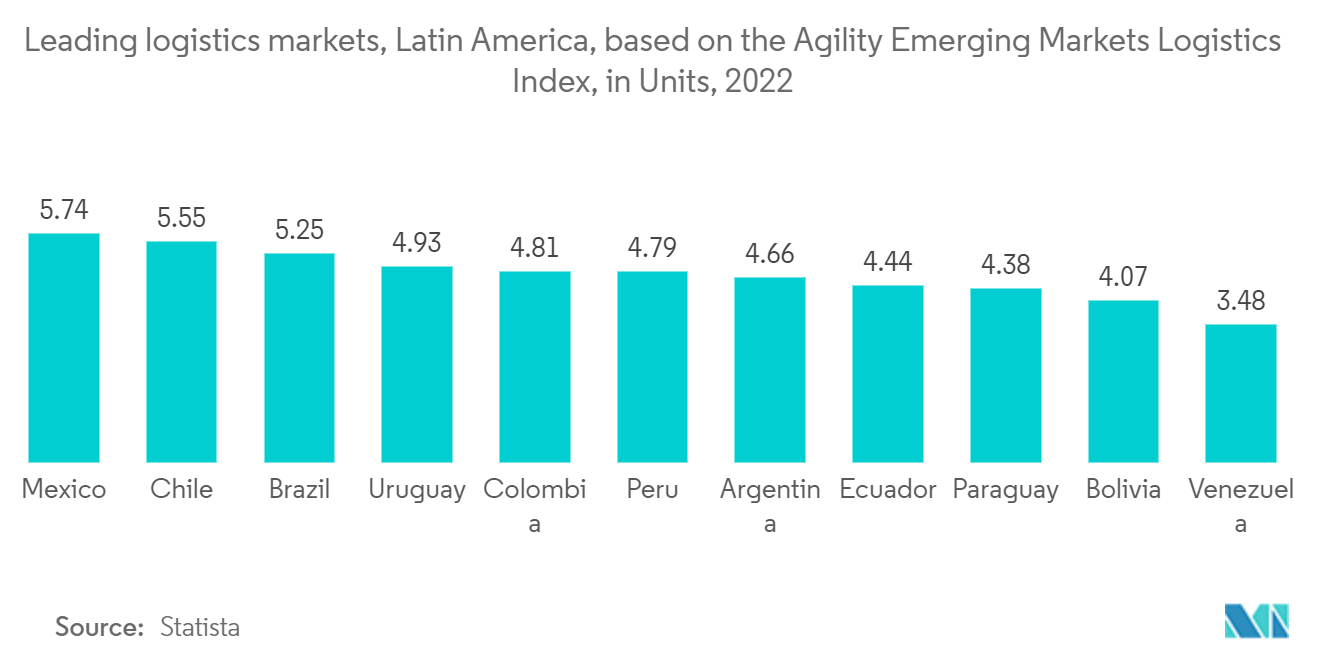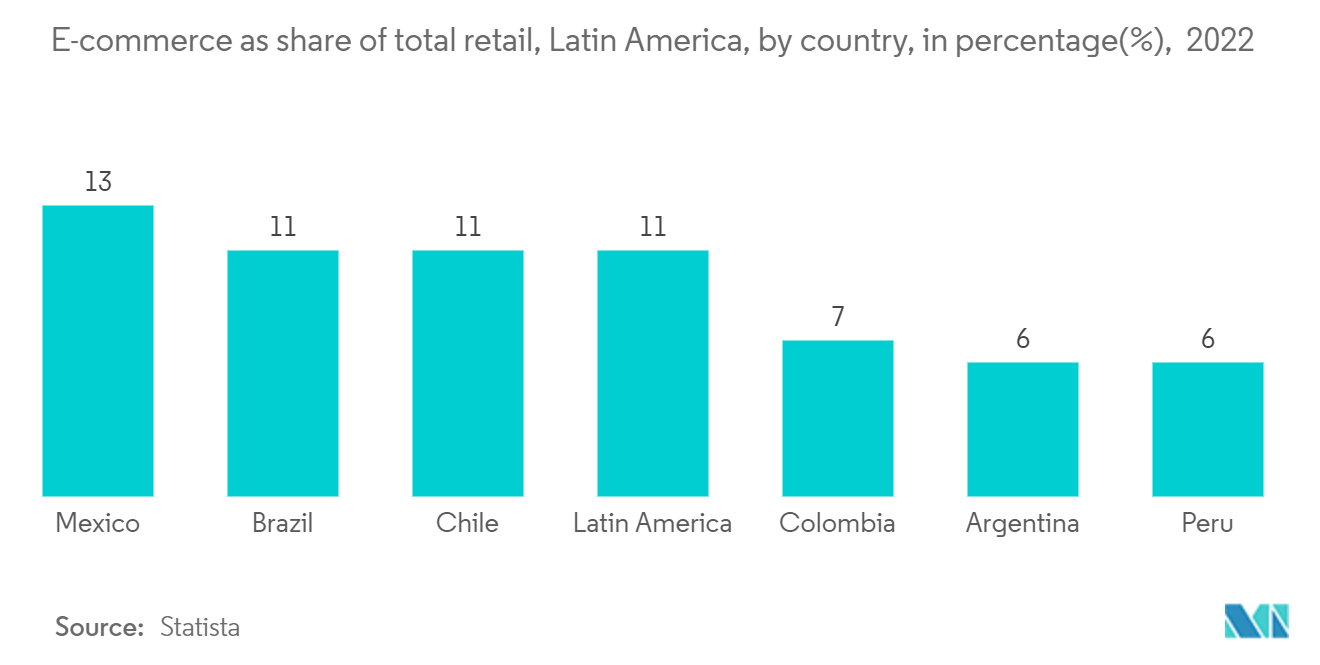Market Trends of Latin America Fourth Party Logistics (4PL) Industry
This section covers the major market trends shaping the Latin America 4PL Market according to our research experts:
Growth in technology integration driving the market
The idea of a "fourth-party supply chain" is a big step toward getting rid of most of the problems caused by the complicated global supply chain.The growth of many end users, like those in the automotive, retail, food & beverage, healthcare, and consumer electronics industries, is also expected to help the global 4PL logistics market grow.Because of the growth of e-commerce and the digitization of infrastructure in developing countries, retailers, for example, have to set up a parallel supply chain to meet both in-store and online demand.Retailers may better allocate stock to suit the expanding needs of their customers' thanks to 4PL services, which help create a strategic vision and increase inventory visibility. By utilizing these services, producers can concentrate on developing a superior and more innovative product portfolio by managing their complex supply chains.
Because the demand for fast-moving consumer goods (FMCG) changes all the time, there is constant pressure to have good manufacturing and accurate stock levels. Businesses must understand anticipated data and take decisions in the moment to accomplish this. To effectively control the flow of goods, technology can be used to input, evaluate, and take action on this data. Having better data integration can help businesses get a better understanding of the people buying their products. This enables improved long-term planning and forecasting while also enabling the company to meet short-term client demand. Distributors and retailers may track their inventories with the aid of sophisticated data analytics. Stores may place orders that are more accurate and take historical sales data and consumer trends into consideration by enhancing their ordering algorithms. This helps to create a supply chain that is simplified and economical. In particular, with precise data, logistics teams can make quick and informed decisions.

Rising e-commerce sales from different industries driving the market
Latin America is a top market for e-commerce because it has a large online population that is growing quickly and is getting bigger. This is particularly true now that the COVID-19 outbreak has started. A previously hesitant consumer group has been persuaded to conduct more of their shopping online by more reliable payment alternatives and store pickup options. But if business owners want to take advantage of an opportunity whose time has come, they must keep in mind the challenges unique to their particular region. The solution to this lies in combining the concepts of SEO with e-commerce. Latin America overtook Asia as the region with the strongest e-commerce growth in 2020. The "big monsters" with their powerful SEO and logistics, like Amazon, Mercado Libre, and Mercado Livre, have emerged as the primary winners from this period.
That being said, this fragmented, cutthroat industry is ideal for e-commerce companies right now. Internet usage in Latin America is at an all-time high, with over two-thirds of Brazilian and Mexican citizens and nearly four out of five Argentines and Ecuadorians having access to the internet. Colombia and Venezuela follow closely, with over 70% of each in 2021. Over 400 million potential e-commerce consumers were online in 17 countries in the region as of January 2021. The COVID-19 epidemic contributed to this boom by causing an almost 20% increase in online purchases. The increase is anticipated to continue, with Latin America's mobile subscriptions expected to reach 484 million users by 2025.
The majority of online shoppers in Latin America favor Android over iOS, and they don't spend much time browsing websites. Nearly 20% of all internet users in Latin America never scroll past the first page of Google search results, even if they are only advertisements, and nearly half of all internet users in the region never go past the top three results. Here, it is crucial to make sure your brand name appears at the very top of the initial Google search results. There has never been a better time to break into the Latin American market than right now, so SEO and e-commerce need to work together. The usual big names in the e-commerce business in the region may have won the first race to the top.


